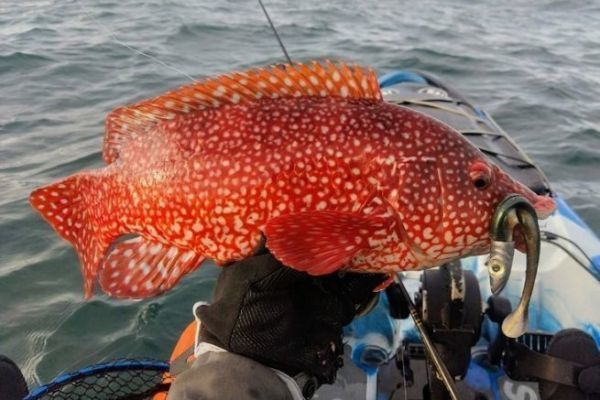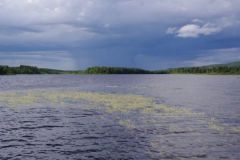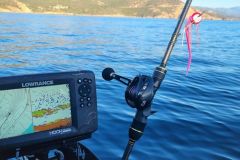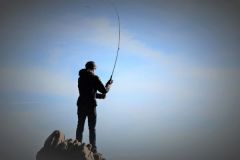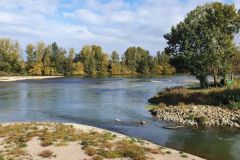A weather window opens
Take advantage of a lull in this uncertain weather to go out safely. At the moment, consulting the weather websites is one of the main activities when preparing an outing. Still between lows for over a month, it's taking some time for the water to return to relative calm. On the tip of Brittany, it's not easy to find good weather slots for safe outings, especially during the autumn/winter season. Outings in the open sea are rare, and when a window opens, even if it's just a skylight, you have to seize it.
On Wednesday, November 22, that window opened. All the right conditions were in place. Clear skies, no rain forecast, rising tide from 07:00, with a tidal coefficient of 56, so no strong currents. And most importantly, no wind, or at least a light northerly, which is reassuring on this part of the coast as it tends to blow you back towards the shore.
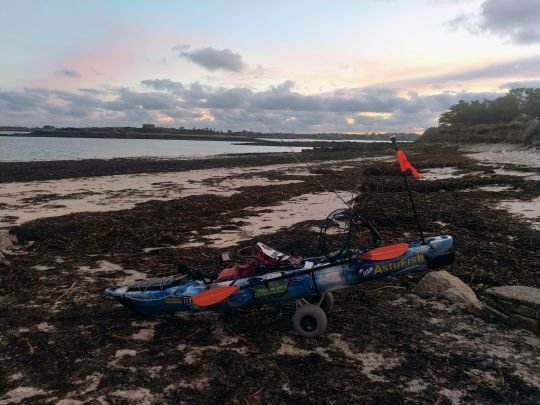
Adapt your lure to the color of the water
The day before, I set up a whole series of combos, in different colors, the color of the water being an important factor in the choice of lure. I have a personal principle that I apply to myself: dark water, dark lure, and of course light water, light lure. I've also chosen different head weights, between 30 and 45 grams, as I'm going to fish on 20 to 30-meter depths and there won't be much current. At 08:00, I'm on the beach, which is littered with debris left behind by the storms we've experienced in recent weeks. The water at the edge is brown, with no more than 20 cm visibility, so it's not going to be easy.
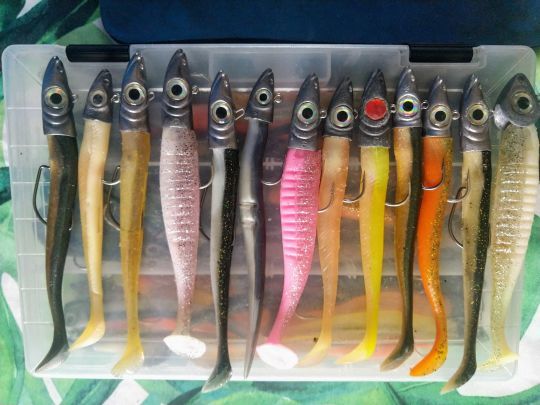
Heading for the open sea, I find the water a little less brown after a distance of 1 kilometer, still sheltered by the rocks. I take the opportunity to put a swimming fish in the water, just before leaving the passes, a big cartridge in my arm, it's a nice sea bass that has taken, unfortunately, this first fish comes unhooked under the kayak. I cast again in the wake, two strokes of the reel and another cartridge. This time, the sea bass climbed into the kayak after a good defense, so I'm not empty-handed.
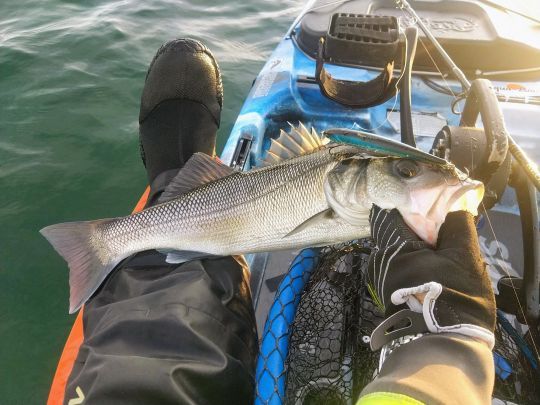
Old and new
Once out of the passes, the water is a little clearer, but still loaded. It takes me an hour of prospecting before I find the right targets for the day, the pollack. They're receptive to green bass and silver olive, two fairly dark colors with a lighter belly. To fish under the kayak, the 45-gram head is a must, and I've used a Texan rig so as not to get too hung up on the bottom. However, there's a tidal current reinforced by the light offshore wind, and the 30-gram head doesn't skim the bottom long enough.

In fact, the fish are pressed to the bottom and won't take off. Catches are made at the fourth and fifth hour of the tide. Some nice pollack, some beautiful old ones with magnificent colors, and even a very nice female coquette. Around midday, I decide to head back, my fishing done. I take advantage of the last hour of rising tide to head back, even though I'm a good 3 kilometers from the starting beach. After cleaning the preserved fish, a quick snack before folding up brings this fine late autumn session to a close.
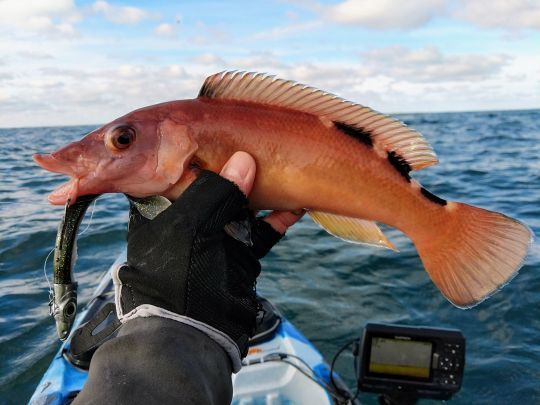
At this time of year, it's a good idea to only go out when the weather is safe, as the water has dropped below 12 degrees. Of course, your equipment must also match the conditions, so don't put yourself at risk. Only then will you be able to enjoy those rare moments on the water in winter.
